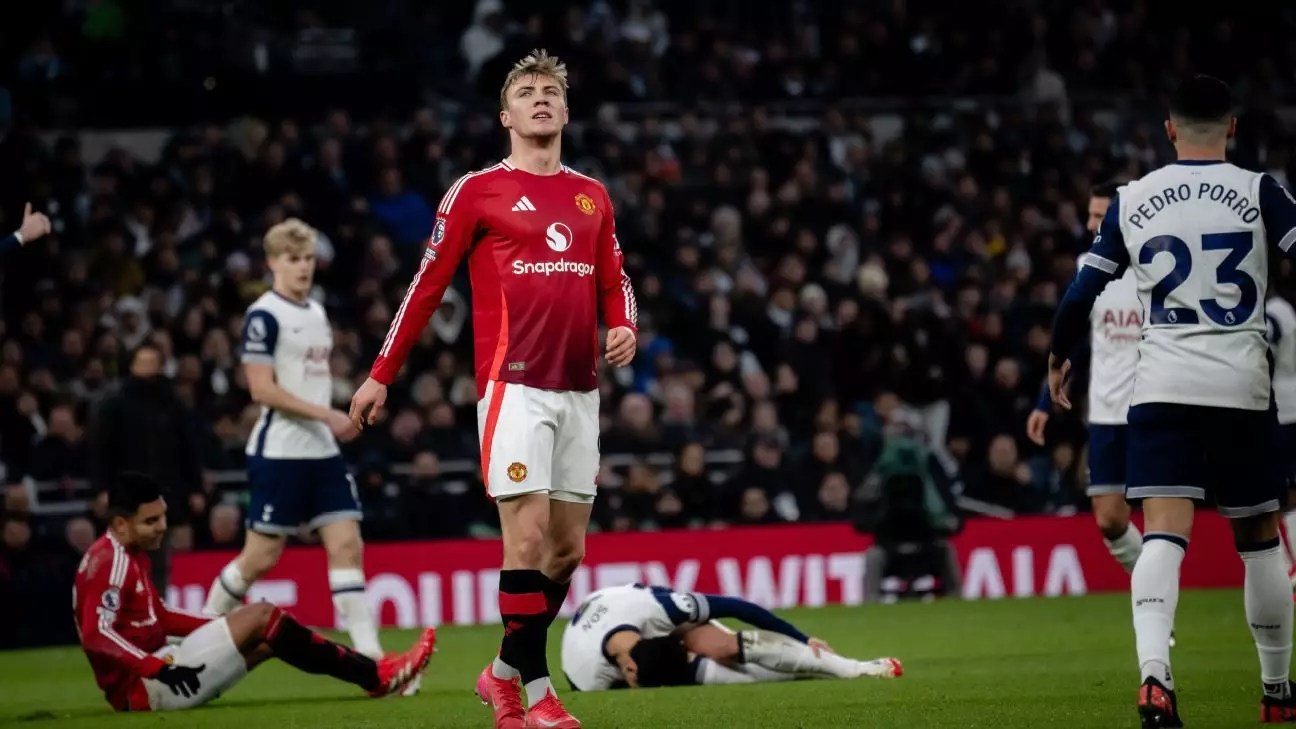In football, the age-old saying rings true: “If you don’t shoot, you don’t score.” This principle is foundational in understanding a striker’s role on the pitch. Currently, Manchester United is facing significant scrutiny regarding their offensive capabilities, with only four teams performing worse in terms of goal count. Surprisingly, the team’s center forward, Rasmus Højlund, is at the center of this debate, particularly when we analyze his shooting statistics. More than 139 players in the Premier League have a better shots-per-90-minute average compared to him—an indication that raises immediate concerns about the effectiveness of United’s front line.
Højlund’s current average of just 1.20 shots per game starkly contrasts with those of his counterparts in top clubs. For instance, stars like Erling Haaland and Ollie Watkins take approximately three or more shots per game, indicating that they are actively seeking scoring opportunities. Such a discrepancy suggests not only a problem within Højlund’s individual performance but may also point toward deeper issues within Manchester United’s overall attacking strategy.
When examining the stats, the disparity becomes even more apparent. Højlund’s meager shot count places him below even defenders and players in less offensive roles. This points toward a concerning trend that is difficult to overlook. Analyzing other center forwards, we see that Højlund’s peers consistently pressure the opposing goal, yet he seems less willing or able to contribute in this critical area of the game. The question arises—why? Is it a lack of confidence, technical shortcomings, or perhaps a misalignment with the team’s offensive structure?
Further scrutiny reveals that this is not an isolated issue. When Rasmus Højlund was at Atalanta, his shot average was a relatively healthy 2.65. In contrasting situations, the striker averaged lower when he was utilized in a less dynamic team setup at Sturm Graz, indicating that an environment that fosters offensive play encourages greater statistics. Thus, one must ponder: Is the problem solely with Højlund, or does it go beyond him?
A continued analysis of tactical frameworks reveals interesting insights. At Sporting CP, Ruben Amorim’s tactical system allowed Viktor Gyökeres to flourish, averaging 4.59 shots per 90 minutes—substantially more than Højlund’s current output. This suggests that while Amorim’s system can indeed produce prolific strikers, there’s a compatibility issue at play with the Manchester United setup. Given that Gyökeres succeeded immensely under the same manager, it’s conceivable that Højlund may not fit into the proposed style of play effectively.
Moreover, the statistical performance of other forwards within the United framework also raises doubts about optimal positioning and opportunity creation. For example, Bruno Fernandes’ average of 2.98 shots per game indicates a focus on individual contributions. However, a center forward’s role should ideally center around leading the attack. This dueling dynamic of roles begs the question: is Højlund occupying the right positions to contribute effectively?
Identifying the issue is the first step, but the more important question revolves around solutions. Højlund needs to find confidence in himself as a goal scorer. This includes being proactive in positioning and taking calculated risks to receive and convert opportunities when they present themselves. He may also need to adapt to the tactical nuances being implemented by Amorim while fostering an understanding with midfielders like Fernandes to enhance the supply chain of passes into dangerous zones.
On the managerial side, it’s imperative for Amorim to assess and perhaps adjust the attacking formation to free up Højlund, promoting a more aggressive approach to scoring. The coach must ensure his star forward feels empowered to prioritize scoring as part of his remit. Additionally, United must consider the implications of Højlund’s current trajectory; if his shot count does not improve, the imminent question could shift from tactical adjustments to potential reinforcements in the transfer market.
While Rasmus Højlund’s low shot count poses questions regarding his effectiveness, it similarly reflects systematic challenges within Manchester United’s offensive play. Addressing both player development and strategic organization will be essential for revitalizing United’s attacking potency moving forward. If Højlund and the United management can catalyze the necessary changes, there lies a potential for significant turnaround in the club’s fortunes in the final third.


Leave a Reply